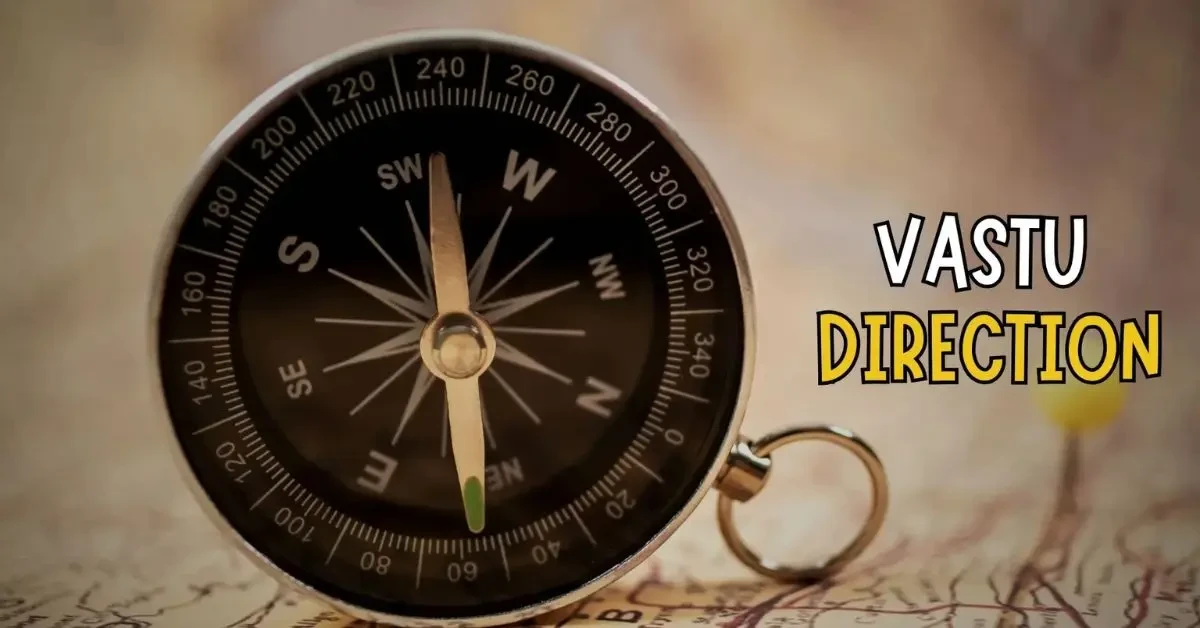DIRECTION IN VASTU
Energy spent while working, during sleep, or meditation, and overall mental attitude depends on the position in which one spends most of the time. Vastu Shastra, which has originated as an old practice, states that every direction in Vastu is charged with a particular type of energy that can help or harm to achieve success, good health, and blissful living. However, you can use these energies provided in Vastu to balance them and bring positivity to your spaces and activities. Be it selecting the correct directions in Vastu for placing your workstation or selecting the ideal sleeping direction for a good night’s sleep, learning about Vastu for directions can change your life in ways you will never comprehend. Now it is time to discuss what is the next step to learn how to open yourself fully to your environment!

- Principle Directions: The principal directions are East, West, North, and South. The principal directions are also called cardinal directions.
- Auxiliary Directions: The auxiliary directions in Vastu are Northeast, Southwest, Southeast, and Northwest. Auxiliary directions are also called Ordinal directions. Each auxiliary direction consists of two equal half sub-auxiliary directions. For example, the two halves of the Northeast direction in Vastu are Northern Northeast and Eastern Northeast. The portion immediately after the North is the North-Northeast direction, and immediately after the East direction is the Eastern Southeast. Likewise, this method applies to all other intercardinal directions in Vastu.
How Many Directions And What Are Their Degrees As Per Compass?
There is a total of 16 directions including 8 cardinal and 8 Ordinal directions. Below are their names with degrees.
- North: 0° or 360°
- Northern Northeast / NNE: 22.5°
- Northeast: 45°
- Eastern Northeast / ENE: 67.5°
- East. (90°)
- Eastern Southeast / ESE: 112.5°
- Southeast / SE: 135°
- Southern Southeast / SSE: 157.5°
- South: 180°
- Southern Southwest / SSW: 202.5°
- Southwest / SW: 225°
- Western Southwest / WSW: 247.5°
- West: 270°
- Western Northwest / WNW: 292.5°
- Northwest / NW: 315°
- Northern Northwest / NNW: 337.5°
What are the Secret Magical Numbers in All Directions?
Have you found one secret magic in direction degrees? When we do add the above each direction digits, the final answer will be "9". For example Eastern Northeast = 67.5°. (6 + 7 + 5 = 9), another example: Northern Northeast = 22.5° (2 + 2 + 5 = 9). That is why most of the residents are interested in the number "9". Have you noticed one thing, many vehicle owners spend a huge amount on their vehicle registration to get the number "9" or "9999" number. It is a sentiment for many billionaires and millionaires.
Significant Information on Directions
- Similarly, the Eastern Southeast adjoins the Eastern direction, and the Southern Southeast adjoins the South direction.
- Further, South-Southwest and West-Southwest are the true half of the Southwest.
- Western Northwest and Northern Northwest are the two half of the Northwest.
- The plot has to be divided into all 8 directions talking with the central point otherwise called Brahmasthan.
- Brahmasthan is the geometric center of the plot, for a plot or a house.
- Any other shapes are unfit to be considered for Vastu. The plots have to be parallel to the road adjoining the same.
- We all are aware that we start Vastu dimensions by locating the magnetic North by using a magnetic compass.
- Place the compass in the center of the plot or flat, mark North and South directions, and draw the radial line, North and South are marked.
- At the Brahmasthan, a line drawn at 90° to the North-South is East-West direction. The principal directions are thus marked.
- From the Brahmasthan on the North-South line draw two lines 29° on either side. The extent of the North is thus 58°. So also South accordingly. Similarly, 29° on either side marked on the East-West line designates the regions of East and West accordingly.
- Thus the influence of the 4 cardinal directions and their geographical dimensions are marked on the plot.
- The other 4 corners namely Northeast, Southeast, Southwest, and Northwest are the other 4 triangular spaces remaining.
- In the center mark, a square location parallels the external dimension at the rate of two lines on each side. This rectangular space would be Brahmasthan. For a flat or an apartment complex, in addition to this, 8 cardinal and auxiliary directions are added, along with two more directions: Sky and Earth. The placement of various services such as the water tank, mumty, staircase, water pump, and servant quarters is usually on the ground, on top of the roof, or both. The citing of these affects the residents of the flat or apartment complex as a whole; thus, all these 10 directions in Vastu are attended to.
Many people think the 8 directions are equal in their geographical intensity and apportion 45° to each side equally. The fact is as follows:
- Sun rays fall perpendicular to the earth only up to 47° as such that alone is East accordingly all other divisions are made.
- However, the difference between 47° and 45° is rather insignificant. As such taking 45° as equal to one direction would be yielding satisfactory results in most common cases. In large enterprises taking 47° would be more appropriate.
- At this point, we would like to mention the difference between the true north and magnetic north.
- The core of the earth containing molten iron makes the magnetic north deviate frequently from the true north. For average people, it is nearly impossible to accurately mark true north. Again here the difference would not matter to our Vastu principles in any significant way. Not only this the magnetic north is far more easily recognizable than the true north which is a complex mathematical phenomenon.
- Taking this into consideration, we suggest only magnetic north. In the same way, taking the geographical realm as 45° is not considered negative in almost all cases.
Conclusion
Nothing could be truer as Vastu Shastra is not about mere planning of areas, it involves planning of energies to work in harmony for the resultant positive impact and that is where one must ensure right direction in Vastu only. Each direction is vital with reference to different aspects in life including health, success and relationship.
In fact it gives an insight on the principles of direction and when followed in the construction of Vastu, it opens the world to much of opportunity and a resultant valuable positive energy for the inhabitants of the home. May the awareness of directions lead to the right and fulfilling future. Glad you are here for more such information, now you know the first step to live a Vastu compliant life!





